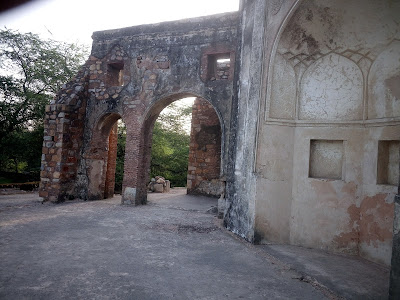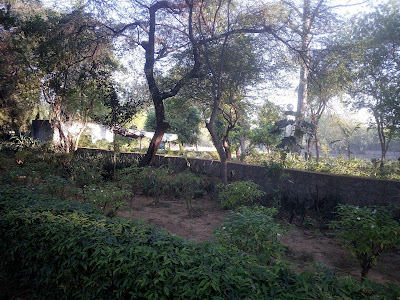Gandhi's Champaran Methods & Champaran Vibhuti
Prof Rabindra Nath Ojha
Today is 15th April 2017. It is not like any other day. It is a special day with special year with special occasion or special event. In a way historic day - historic because Mahatma Gandhi arrived by train at Motihari in Champaran district of Bihar on this day only.
 |
| Image courtesy: champaransatyagraha.org |
It was on this day,100 year ago in 1917, Mahatma Gandhi came to this region following the request of Raj Kumar Shukla, a local cultivator.
Mohandas Karamchand Gandhi visited Champaran to bring succour to distressed peasants forced to cultivate indigo. The story of Chamapran begins in the early 19th century when European planters had involved the cultivators in agreements that forced them to cultivate indigo on 3/20th of their holdings known as "Tinkathia" system. One Bigha is equal to 20 Kattha of land. As per "Tinkathia" system 3 Kattha of land out of 20 Kattha to be reserved for growing of indigo.
The peasants had to pay enhanced rents over a period known as "Sarahbeshi" or simply get out of the system paying a lump sum known as "Tawan".
It was in Champaran that Mahatma Gandhi , for the first time , applied the techniques of "Satyagraha" and "Ahimsa (Non-violence)" perfected in South Africa, in India. Champaran, in a sense, is the first political laboratory where Gandhijee made his experiments and then replicated them in other parts of the country. Satyagraha is polite but firm & non-violent defiance of the authority, basing struggles not simply on emotions and grievances but concrete enquiry and fact-finding.
The methods or techniques of Champaran movement remain relevant, even desirable in today's fractured times. The Champaran struggle is a very good example of restrained moral struggle combined with social responsibility. There were no marches or strikes in Champaran yet Gandhijee sought to win over the opposition through the art of political persuasion. But what is happening today in politics is to achieve a political victory by hook or by crook, by any means whatsoever.
There has been one great personality of Champaran, though not much highlighted, Champaran Vibhuti Prof Rabindra Nath Ojha who always fought for the causes of downtrodden, distressed and deprived people of the society, adopting the methods of Satyagraha and Non-violence, perfected & practiced by Mahatma Gandhi.
 |
Champaran Vibhuti Prof Rabindra Nath Ojha
Image (C) Dr Ajay Kumar Ojha |
Prof R. N. Ojha struggled for the causes of the students, for the genuine rights of teachers. He fought for the causes of poor people including rickshaw-valas, spearheaded many such movements including trade union adopting the methods of Satyagraha, sat on fast-unto-deaths several times, sent to jail many times and most of the times had been successful in getting his demands accepted by the concerned authorities. Prof Ojha was very active in JP movement also. He was arrested under MISA also for two times, once for more than two months, tortured -traumatized, got suspended also. Even though he was the first person to be arrested under MISA in West Champaran, he refused to accept the offer of MP ticket. See the tragedy of the system, he is yet to receive JP Senani Samman by the Bihar Government.
While releasing a book "Viprah Bahudha Vadanti" in Delhi Shri Raghav Sharan Pandey IAS and then Petroleum Secretary said about Prof Rabindra Nath Ojha , " I have been very much influenced by three personalities in my life - Einstein, Mahatma Gandhi and Rabindra Nath Tagore. I find the reflections of all the three in Prof Ojha."

































































